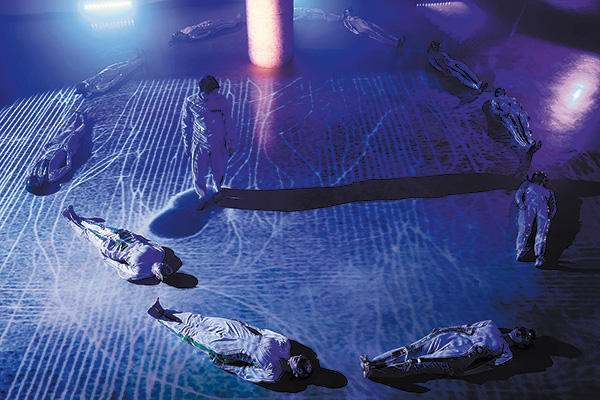

"It is open-ended. Only when the audience attends and participates in the performance, and interpersonal communication is established, can we say that our creative vision is fulfilled."
Diverting from the conventional idea that the audience is merely a viewer of the creators' works, according to Xiao, in this contemporary project, the audience plays a part along with the creators.
In one scene, for example, the dancers are holding mobile phones and filming one another, with the footage projected live on the wall. A lot of the viewers film the dancers, but what they do not know is that a camera is recording them doing so.
"In the end we will produce a video, that will truly complete the work. That's why I consider it an artistic action that achieves people-to-people interaction," Xiao adds.
Dai Jian, another cofounder of the project and an associate professor from the Beijing school, says that the title comes from the founders' thoughts about the relationship between people and technology.
Initially agreeing to present an intercultural exchange, the creators decided to zoom in on the changes of life brought by the universal experiences of facing technological advances.